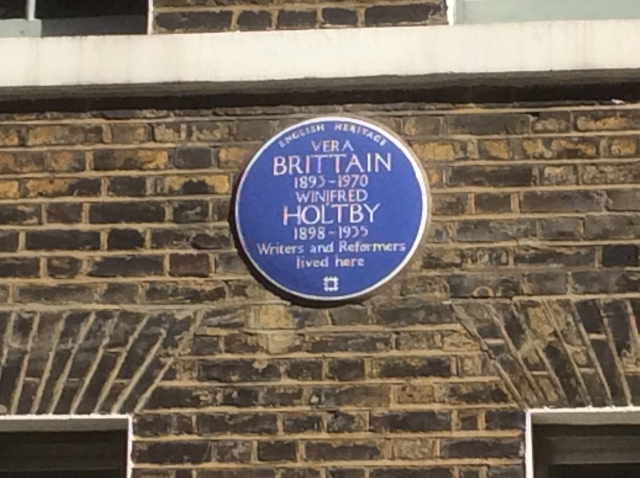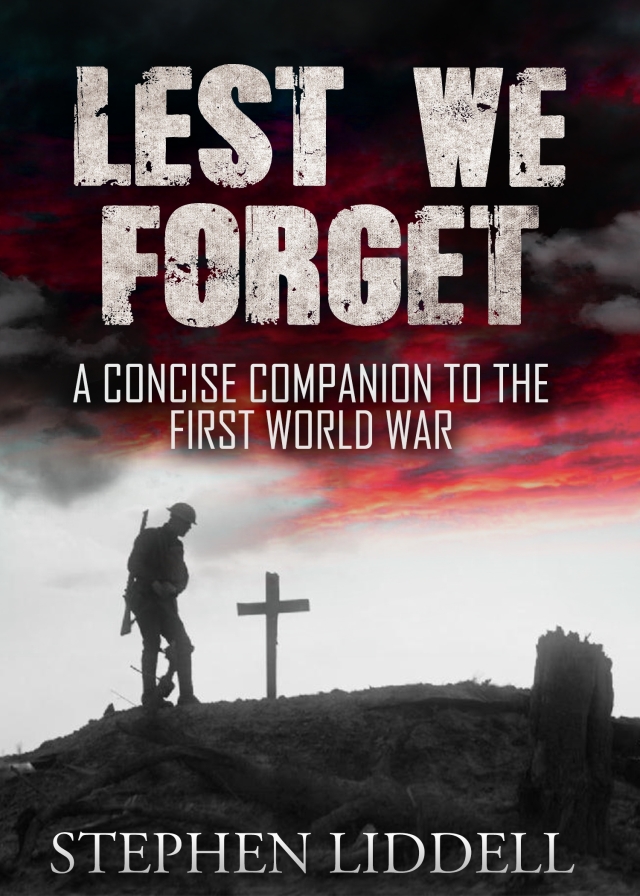When we think of The Great War, the role of women is an often forgotten element in comparison to the famous battlefields around the world. However as the German leadership quickly stated, WW1 was a total war that required the participation of each nation to win and that included women. Not only did WW1 change the perceived role of women in Great Britain but women were crucial to the war effort itself.
Women were non-combatants in WW1 but they worked in a number of important support roles which would previously had been carried out by men if only they hadn’t gone off to fight for their country.
It was their job to keep the home fires burning and by the end of 1914 over 5 million of 24 million women were working in a large variety of jobs including office jobs, farms, clothing factories and munitions factories where working women were known as Canary Girls. Many women sewed socks and other warm items of clothing for soldiers in Europe whilst others performed charity work though with no-one else to support them, women were always mindful to concentrate on paid-work so their children wouldn’t starve.
Right from the beginning of the war, Britain encountered a crisis with production of munitions for the front line. Ammunition was needed on an unprecedented scale and following the Shell Crisis of 1915, the government put in place legislation forcing munitions factories to open their doors to women. By 1917 approximately 80% of the ammunition used by the British Army was being manufactured by women in armament factories. Sometimes referred to as Munitionnettes, they women were required to work with dangerous chemicals and TNT on a daily basis and with none of the safety equipment that would be used today. Repeated and prolonged exposure of their skin to Sulphuric Acid would make the women’s skin glow yellow, an attribute that earned them the term ‘Canary Girls’. The chemicals also would cause many chronic long term health problems such as anaemia, liver failure and infertility and those that did babies often gave birth to yellow coloured children.

Women working in a small munitions factory at Woolwich Arsenal.
The work in the munitions factories was arduous but did give the women a feel of patriotism and of helping their men folk whilst also officially offering a salary twice as high as their previous war employments though only half the wage of a man doing the same job. Unofficially, however many women found ways to earn much more even than non-commission officers on the Western Front. The work there was hard, physical and repetitive and many women worked 12 hour shifts 6 or 7 days a week. Such work also presented real dangers and during the war hundreds of women died from accidental fires and explosions in the factories.
The role of women to the war effort became even more important following the introduction of conscription in 1916 when men were forcibly sent to war leaving more jobs that needed to be done. Although the trade unions ensured that these jobs were only temporary so that returning soldiers after the war would have some sort of paid employment.
The Government also invited women to join the ranks of the Women’s Land Army, an organisation that offered cheap female labour to farmers who were not always happy to employ women. The 260,000 volunteers that made up the WLA were given little more than a uniform and orders to work as hard as they could. The advances in mechanical farming of the previous decades were lost as fuel restrictions made a return to manual agricultural labour unavoidable.
A typical example of a Land Girl as the WLA members came to be known is that of Agnes Greatorex from Cardiff who left the traditional role of domestic service for life at Green Farm. She recalled “We had to get up at five in the morning for milking, and then we’d have to take it up to Glan Ely hospital. After that – especially during the winter – we’d have to muck-out the cow sheds. Then we might get half an hour for breakfast. I’d be out there picking up stones from the field or cutting hay, and I’d be as happy as a lark.”
She believed that, although her work on Green Farm was equally as arduous as that in service, being a Land Girl gave her a glimpse into the future of better prospects for women.
“When I became a Land Girl I thought that’s it, I’m independent. I had a pound a week, not as much as the men but a lot still – there was no-one to boss me, no more running around at the beck and call of the cook. I think the First World War did change women. Because once they’d had a taste they wouldn’t go back to service, they were free.”
The role of the Land Army was particularly important when it is remembered that the U.K. only grew 35% of its annual food consumption in 1914 and the Germans tried their best to blockade the shipping routes to starve the country into submission which in the end is what the Royal Navy did to Germany. Nevertheless, it was always a fine line and at one point in 1917 there was only 3 weeks of food supplies in the country. Without the effort of the women on the land it is likely that the country would either have starved, surrendered or at least famine would have caused widespread death and civil unrest.
It isn’t widely known whether women workers understood from the beginning that their employment could only be temporary that is how it transpired. It was a similar story in other nations fighting in the war with women brought in to work in the jobs evacuated by men only to be dismissed back home to make room for the returning soldiers.
Nursing was the only section of the military that was open to women and many thousands of them joined up with several hundred being killed during the war from amongst all the Allied nations. Much of our impression of nursing in WW1 is tinged in romance with gentle kindly young nurses in starched and white uniforms tending heroically in the Voluntary Aid Detachment or VAD.
One of the best accounts of the VAD is written by one of its most prominent members, Vera Brittain. Born into a relatively wealthy family in Newcastle-Under-Lyme, Vera was sent away to a private boarding school before gaining entrance to Oxford University but in 1915 she put her studies and career on hold to go into the VAD.
After the war she movingly remembered her experiences in her publication ‘Testament of Youth’. She was a feminist and a pacifist, partly due no doubt to the fact that she had lost all of the important men that she loved in her life including her fiancé Roland, her brother Edward and her close friends Victor and Geoffrey.

Vera Brittain as a nurse
Vera threw herself into nursing in some of the most dreadful battlegrounds in an attempt to ease the pain of her multiple bereavements. She also later dedicated herself to recreating the characters and lives of those she had lost so that generations of readers would come to know them and in a way live on in the memory of the readers.
Like many others, Vera Brittain was expecting her fiancé Roland Leighton to return home on leave just after Christmas 1915. Sadly he died on December 23 of wounds received during a night-time wire inspection a day earlier. Here is an extract from a letter written by Vera to her brother Edward on January 14 1916. She had been working at the London hospital and so have been able to travel to Brighton to visit Roland’s family
“I arrived at a very opportune, though very awful, moment. All Roland’s things had just been sent back from the front through Cox’s; they had just opened them and they were all lying on the floor. I had no idea before of the after-results of an officer’s death, or what the returned kit, of which so much has been written in the papers, really meant. It was terrible. Mrs Leighton and Clare were both crying as bitterly as on the day we heard of his death, and Mr Leighton with his usual instinct was taking all the things everybody else wanted and putting them where nobody could ever find them. (His doings always seem to me to supply the slight element of humour which makes tragedy so much more tragic.)
These were his clothes – the clothes in which he came home from the front last time. Everything was damp and worn and simply caked with mud. And I was glad that neither you, nor Victor, nor anyone else who may some day go to the front was there to see. If you had been you would have been overwhelmed by the horror of war without its glory. For though he had only worn the things when living, the smell of those clothes was the smell of graveyards and the dead. The mud of France which covered them was not ordinary mud; it had not the usual clean pure smell of earth, but it was as though it were saturated with dead bodies – dead that had been dead a long, long time. All the sepulchres and catacombs of Rome could not make me realise mortality and decay and corruption as vividly as did the smell of those clothes. I know now what he meant when he used to write of “this refuse-heap of a country” or “a trench that is nothing but a charnel-house.
We discovered that the bullet was an expanding one. The hole where it went in in front – well below where the belt would have been, just below the right-hand bottom pocket of the tunic – was almost microscopic, but at the back, almost exactly where his back bone would have been, there was quite a large rent. The under things he was wearing at the time have evidently had to be destroyed, but they sent back a khaki waistcoat or vest … which was dark and stiff with blood, and a pair of khaki breeches also in the same state, which had been slit open at the top by someone in a great hurry – probably the doctor in haste to get at the wound, or perhaps even by one of the men. Even the tabs of his braces were blood-stained. He must have fallen on his back, as in every case the back of his clothes was much more stained and muddy than the front.
The charnel-house smell seemed to grow stronger and stronger till it pervaded the room and obliterated everything else. Finally Mrs Leighton said, “Robert, take those clothes away into the kitchen, and don’t let me see them again; I must either burn or bury them. They smell of death; they are not Roland, they seem to detract from his memory and spoil his glamour. I won’t have any more to do with them.”
And indeed one could never imagine those things the same as those in which he had lived and walked. One couldn’t believe anyone alive had been in them at all. No, they were not him. After the clothes had gone we opened the window wide and felt better, but it was a long time before the smell and even the taste of them went away.”
After the war, Vera went on to write a number of acclaimed works on her experiences in the war. She also became an active speaker at the League of Nations and joined several pacifist organisations. She lived until the 1970’s and when she died she had her ashes scattered on the grave of her brother in Italy who she had loved so much and missed for so many years.

You can visit the home of Vera Brittain on my Bloomsbury Literature Walk
Elsewhere, the main trained corps of military nurses in the British Army was the Queen Alexandra’s Imperial Military Nursing Service (QAIMNS). It was founded in during the Boer War in South Africa in 1902 and at the time of the start of WW1 was less than 300 strong. At the end of the war four years later it numbered over 10,000 nurses. There were also several other organisations formed earlier in the century focused on the nursing of injured members of the military such as the First Aid Nursing Yeomanry launched in 1907.
With the exception of the QAIMNS, the British Army was resolutely opposed to nursing units comprised entirely of women and so many of the early female volunteers from Britain instead served with the French and Belgian forces. Many of these early volunteers were either from aristocratic families or their servants. Such women who ran large families and large estates were well versed in management and saw no great problems in managing a military hospital instead. There powerful positions at home gave them a natural confidence in their abilities at war.
Perhaps the most famous of these aristocratic women was the Duchess of Sutherland who was nicknamed Meddlesome Millie. Soon after war was declared she and other Ladies like her took doctors and nurses to France and Belgium, organising their own transport and equipment to set up hospitals and casualty clearing stations.
Whatever bureaucratic obstacles were put in their way, the huge and bloody tide of casualties by the spring of 1915 simply swept them away. Even the British Army’s top brass yielded to the combined pressures of desperation and strong, confident commitment.
When the government encouraged greater female participation in all sections of employment, thousands of young women from middle-class homes with little experience of domestic work, not much relevant education and total ignorance of male bodies, volunteered and found themselves pitched into military hospitals. In many instances they not made to feel welcome and professional nurses who had long battled for some kind of recognition and better training feared this large invasion of unqualified volunteers would undermine their efforts.
VADs were usually very poorly paid and were often used primarily as domestic labour, cleaning floors, changing bed linen, swilling out bedpans, but were rarely allowed until later in the war to change dressings or administer drugs. Relations between professional nurses and the volunteer assistants were constrained by rigid and unbending discipline. Contracts for VADs could be withdrawn even for slight breaches of the rules.
A sometimes forgotten part of the experience of women in WW1 is that it fell primarily to them to adjust to life after the war and hold the country together. Millions across Europe in particular didn’t return home and hundred of thousands of men who did get back home were injured in some way. Women bore a large part of the burden of caring for these men whilst dealing with continuing without their fathers, husbands, lovers, brothers, and sons. All the time life had to go on, the country had to be rebuilt and children and families had to get back into normal life no matter how difficult it was.
For all of this the women did see advancement of their status and position in society. The Suffragette movement had reached an agreement with the government at the start of WW1 and a cessation of protests was ordered though the movement remained strong with a continual though peaceful campaign for change. Their patience and hard work was rewarded by the 1918 Representation of the People Act which granted the vote to women over 30 who owned property, giving women a voice in government for the first time.
Soon after this the Sex Disqualification (Removal) Act of 1919, made it illegal to exclude women from jobs because of their gender, opening the doors to women of all classes to enter previously male dominated professions.
Mrs Millicent Fawcett, president of the National Union of Women’s Suffrage Societies from 1897-1918 described that “The War revolutionised the industrial position of women – it found them serfs and left them free”.
It’s a common held view that women achieved universal suffrage in 1928 solely because of their role in WW1 which made men realise that women were capable of working in the wider world. However whilst WW1 helped narrow their pay-gap to just two-thirds of the male wage, it can be argued that women were always likely to get the vote following the decision to give the vote to the working class soldiers.
For another incredible lady of WW1 then check out my post on Edith Cavell
If you enjoyed this post then you might want to check out my WW1 history book Lest We Forget, published by Endeavour Press of London.

My easy to understand but comprehensive history of WW1 in Kindle and Paperback.
Lest We Forget is available in Kindle and Paperback formats in all good on-line outlets and literary stores too. The Kindle version is published by Endeavour Press of London, one of the world’s leading digital publishers. The paperback version is available too for those folk like me who prefer an excellent book and the paperback includes a number of maps and archive photos as well as some personal photos of my family members who like millions of others, fought for our freedom only never to return home.
You can order Lest We Forget: A Concise Companion to the First World War from Amazon.com in Kindle for $4.58and paperback for $9.99 and Amazon.co.uk in Kindle for £2.99 and paperback for £6.99 and other Amazons around the world.
Advertisements Share this:





